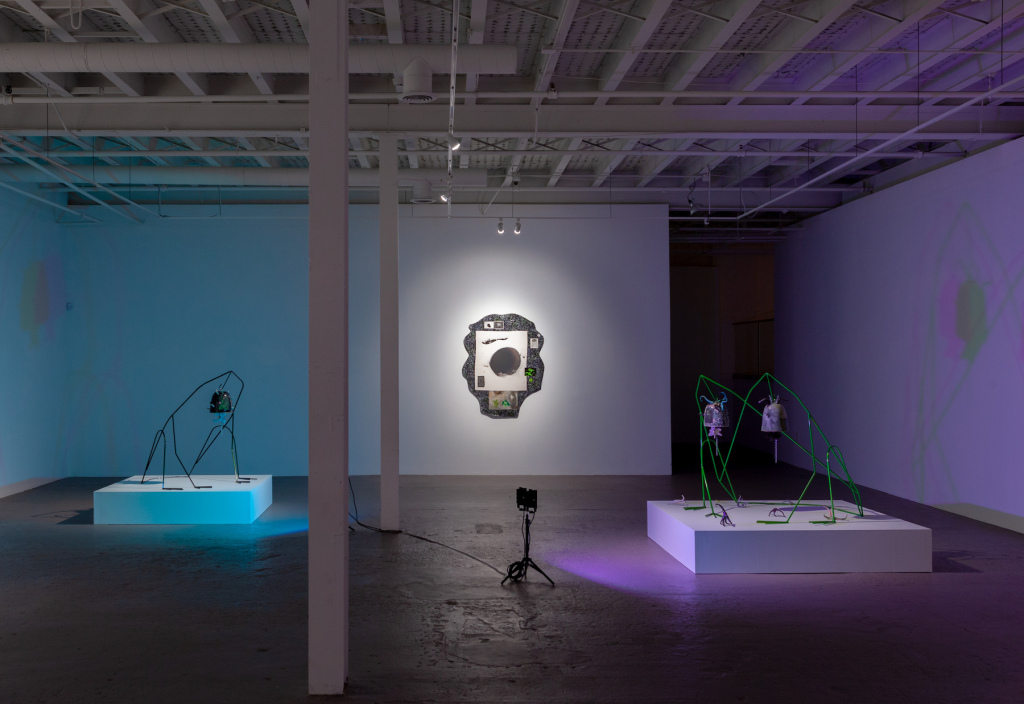 Erin Jane Nelson
Erin Jane Nelson
According to Erin Jane Nelson’s mom, the first word the artist said as a baby was flower. In the context of Nelson’s newest body of work, this is fitting. The pieces touch on invasive species, pathogenic fungi, sewer drains, frogs, national borders, climate collapse, colonialism, and—yes—flowers, obliterating distinctions between human and nonhuman worlds.
Nelson’s exhibition “One Entanglement, Under Clouds,” on view at the Museum of Contemporary Art of Georgia (MOCA GA) through October 2, comprises wall reliefs alongside freestanding ceramic and metal sculptures. The wall reliefs, shaped like shields or burst cells, are made of plywood or stoneware. Their surfaces accumulate fabric coverings, photographic images, drawings of plants and other organisms, and ceramic embellishments resembling tentacles and seedpods. It’s as if some unseen rhizomatic root system holds these disparate elements together.
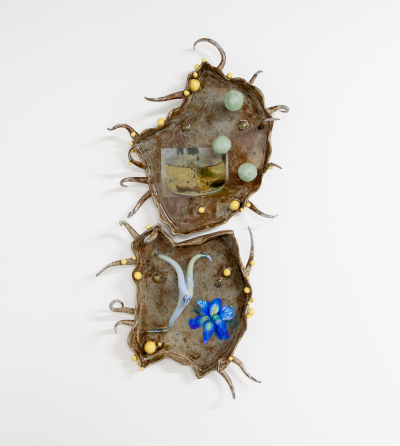 Erin Jane Nelson
Erin Jane Nelson
On the gallery floor sit large, powder-coated steel armatures with amphibian-like feet. From the armatures, fabricated by Nelson with fellow Atlanta artist Jane Foley, hang ceramic bells. Nelson hand-threw the bells on a wheel and then added modeled ceramic appendages (similar to the ones on the wall reliefs) before firing and glazing them. The glazes on the bells call to mind petri dish cultures or cells seen through a microscope, and the clappers spill out from the bells’ interiors like the labella of orchids. She made these pieces, Nelson says, “with the idea of them as these fragile, almost un-ringable alarm bells.”
Nelson sees her artmaking as a continuous exercise from which she pulls threads for specific projects. The work in this show, for instance, grew out of half a dozen ceramic bells made around the time that Nelson was reading a book on fungus, Merlin Sheldrake’s Entangled Life.
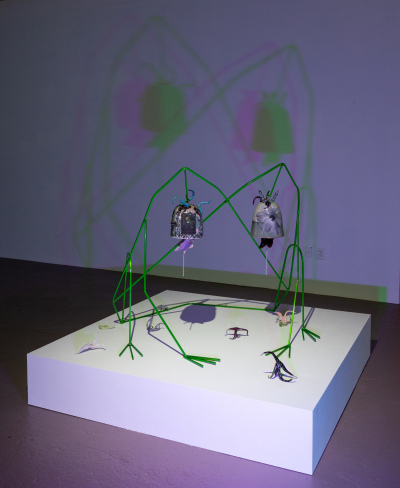 Erin Jane Nelson
Erin Jane Nelson
Conjoining a wide variety of materials in each piece demands a considerable amount of planning, so Nelson relies on drawings and stencils to determine forms before she begins construction. She works out of her home in Atlanta, where she and her husband, Jason, have “turned most of the usable space into some kind of studio.” The garage houses their kiln, wheel, and slab roller, while the basement is a general studio space. Sometimes projects spill into the backyard and patio. “Having everything under one roof is definitely a dream,’” she says, recalling past years spent living in an apartment and commuting to studios across the city.
The photographic images in Nelson’s work mostly come from a massive archive of film and digital pictures she has taken over the past 15 years and which she prints on a pigment printer. Interspersed among them is found printed material; a few of the wall reliefs here, for example, feature clippings from a 1960s U.S. Department of Agriculture circular on invasive aquatic species. For Nelson, the visual language of these “stark, early- and mid-century, black-and-white photographs feel[s] like a big part of the origin story of American exceptionalism and how we see landscapes.”
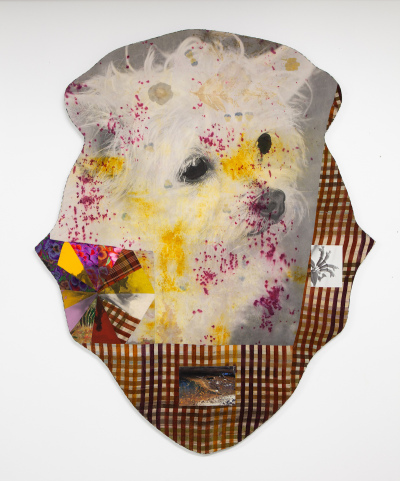 Erin Jane Nelson
Erin Jane Nelson
As for the rest of the items she embeds in her works, Nelson gravitates toward secondhand stuff. “When I try to consciously source materials, I find it very hard to find anything at all,” she says. “Ebay rabbit holes are also partly to blame.” Found objects and ceramic add-ons are attached with Ecopoxy, a resin derived from plant materials, by-products of corn and soybean oil production, algae, sugars, and saps. Though still carbon intensive, it is less intertwined with fossil fuel production than traditional petrochemical-based commercial resins.
Most weekends, Nelson spends a few hours working in her garden before settling into studio work. Though the soil, according to the artist, is a “challenging, super-acidic, super-dense red clay made worse by development, neglect, and lawns,” she’s been working to bring it back to life with the assistance of fungi, bugs, and bacteria. In her introduction to “One Entanglement,” Nelson explains, “I want to imagine that the frenetic, entangled collapse of our planet could unfold into a thousand possible adaptive futures.” In her backyard, exhausted ground becomes fertile again and her alarm bells don’t look so different from wind chimes.
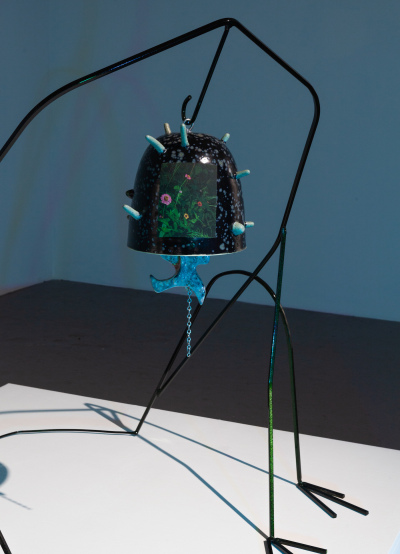 Erin Jane Nelson
Erin Jane Nelson
Source link : https://www.artnews.com/art-news/artists/erin-jane-nelson-one-entanglement-1234604062












